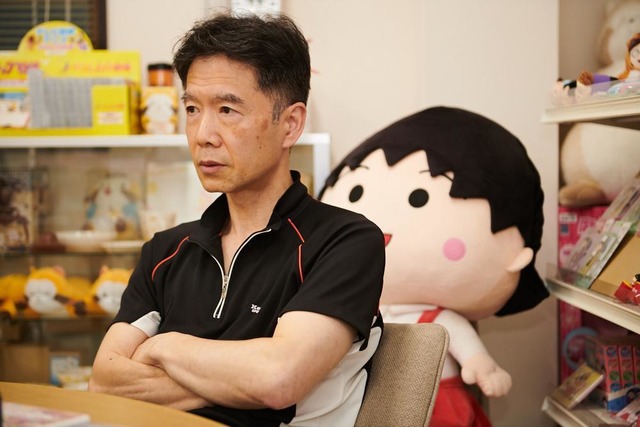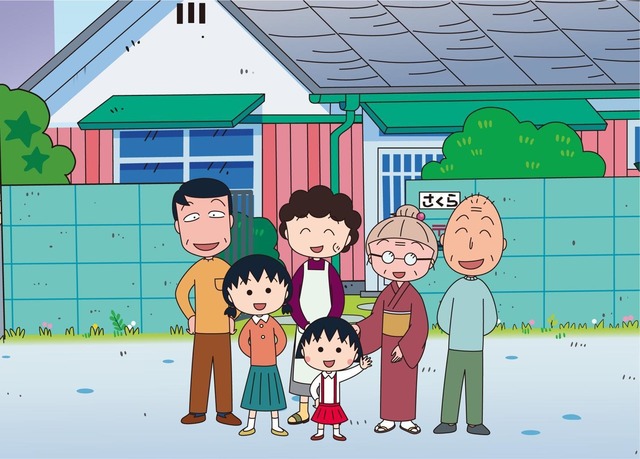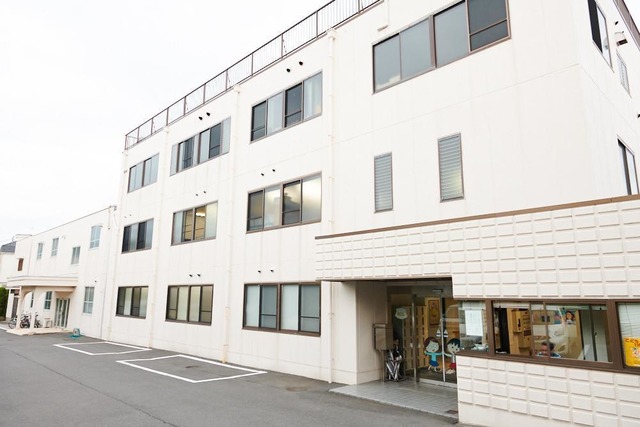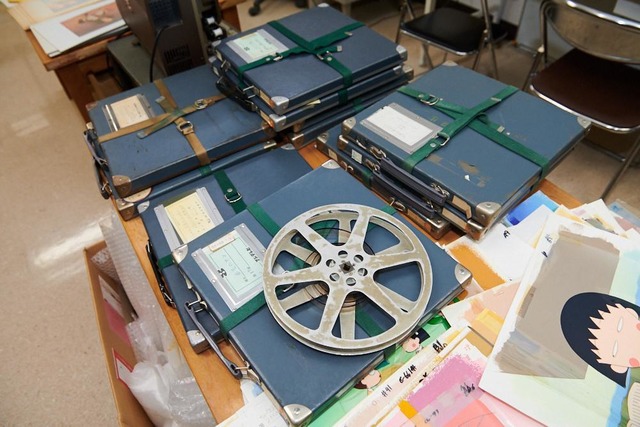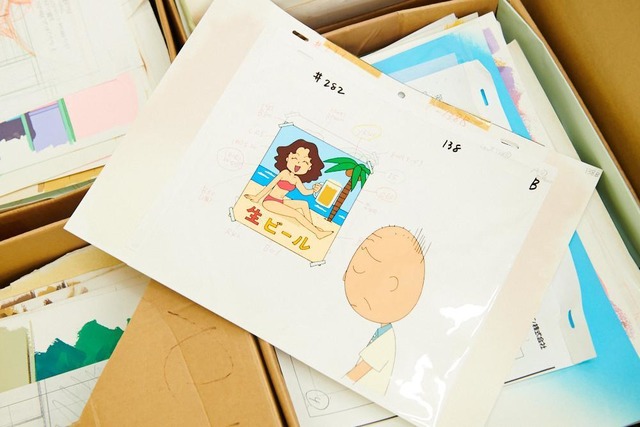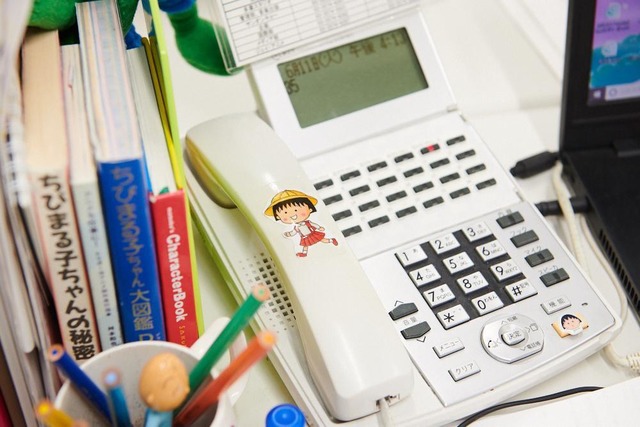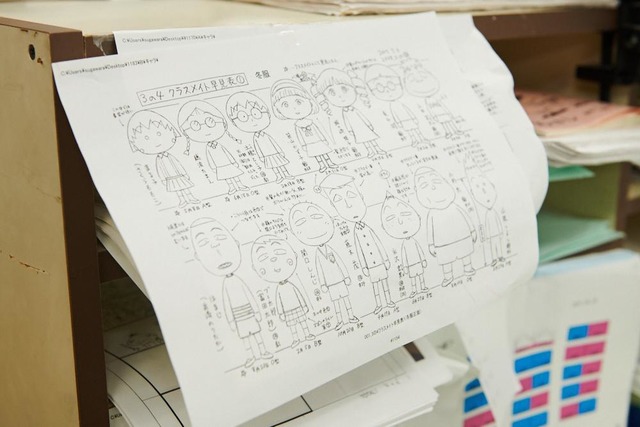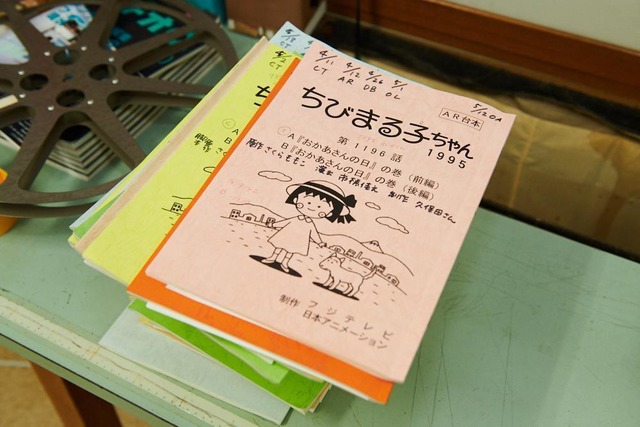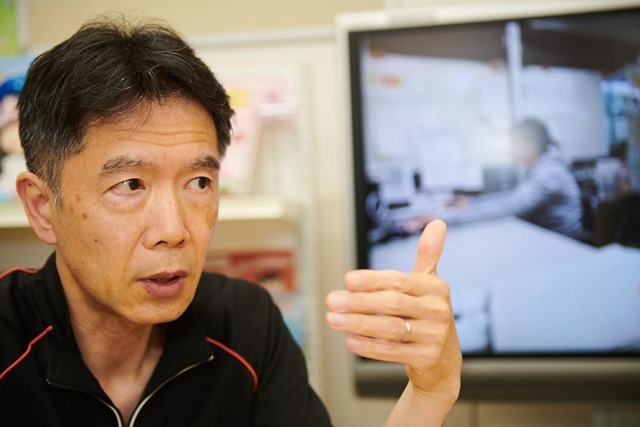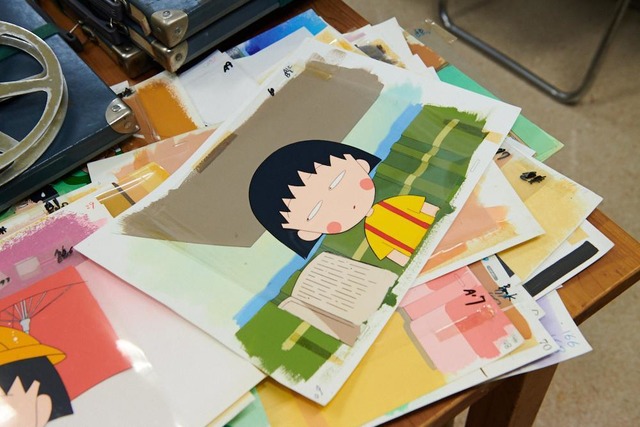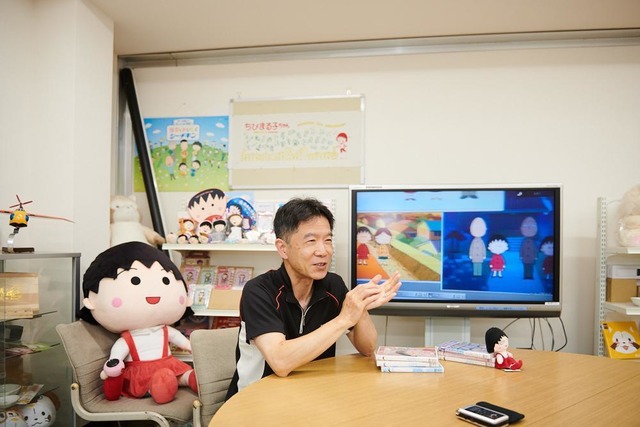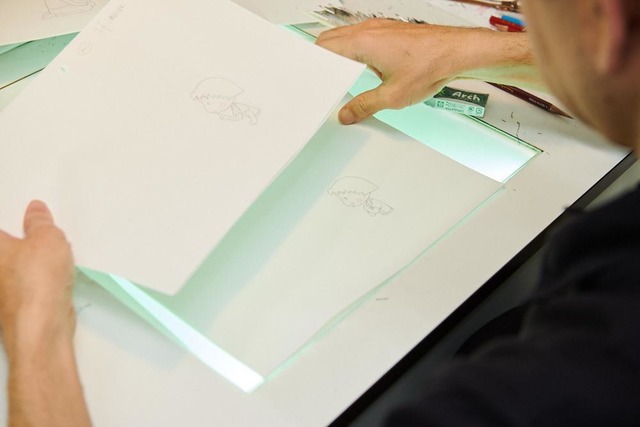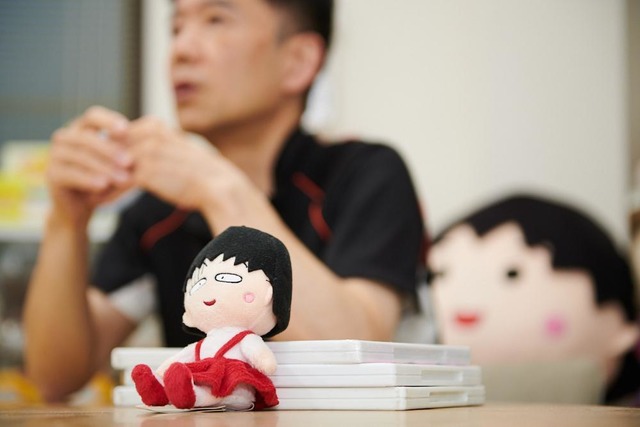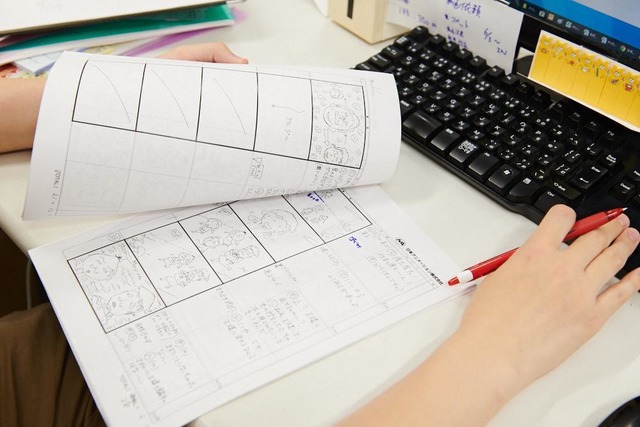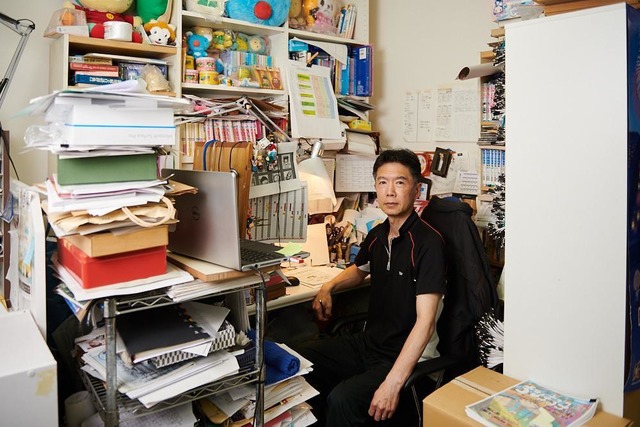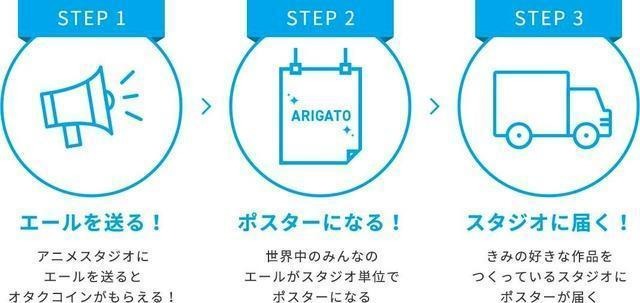「Anime Production Studios Gaining Global Attention and Paving the Way to the Future」
Vol. 18 Nippon Animation Part1
Japanese anime is getting more and more attention from the world. We interviewed some of the people who actually produce it to hear some of their thoughts about the production process and a few behind the scenes stories too. It will be a large-scale project that links anime news sites from all over the world, such as the anime information site 「Anime! Anime!」, 「Tokyo Otaku Mode」 which has over 20 million registered users, Chinese language site 「Bahamut」, and others.
Nippon Animation’s representative works: 『Chibi Maruko-chan』,『A Dog of Flanders』,『3000 Leagues in Search of Mother』,『Rascal the Raccoon』,『The Adventures of Tom Sawyer』,『Ukkari Penelope』,『Tonde Burin』, 『Les Misérables: Shoujo Cosette』,『Haikara-San: Here Comes Miss Modern』
Nippon Animation has sent out many memorable works, including the『 World Masterpiece Theater』 series starting with 『A Dog of Flanders』. 『Chibi Maruko-chan』, which is popular not only in Japan but also in Asia, is also produced by the company. We have spoken with Takagi Satoshi, who works as the director of the film since 2007, about the charm and difficulty of Maruko and other Japanese animation.
[Interview / Composition = Fujitsu Ryota]
–Director Takagi has been the director of “Chibi Maruko-chan” since 2007.
How did you become a director?
Takagi: In the first phase of “Chibi Maruko-chan” (1990~1992), I participated as a director and directed there.
During the 2nd phase (1995~), I was a director of “Sakura Momoko’s Kojikoji” and “Penelope” as well. I participated in the production, and in the meantime, there was a rumor that Yumiko Suda would quit at Episode 600, so I decided to take over.
A little while before that, the producer in charge asked me, “Mr. Takagi, if Director Suda would really quit, can you become the director?”
I was asked half-jokingly, and at that time I didn’t know that Director Suda would really quit, so I was wondering what he is talking about. *bitter smiles*
――Is there any succession from Director Suda?
Takagi: Nope. Director Suda just said, “Since you are the new director, you can do whatever you want.”
I thought maybe we could collaborate over one or two script meetings, but as soon as the final episode was done, she was right out of there. *laughs*
So I could do as I pleased, but I think the screenwriters were confused because of the way we work suddenly changed.
— As Suda directed so many episodes she must have had a deep understanding of the world of the show. Are there any memorable episodes in the era of each production for you?
Takagi: In the original screenplay by Ms. Sakura (Momoko), there was a time when Dad Hiroshi borrowed an 8mm camera (episode 95: “Dad borrows 8mm camera”)
The 8mm camera appeared as a special prop that usually does not appear, so I remember the story developing out from there and being really fun to do.
Also, “Ureshii Ochugen” (episode 129). In her original script there’s stuff that wasn’t in the manga, so turning it into anime was really fun to think about.
–What is it that you really concentrated on when you’re directing Chibi Maruko-chan?
Takagi: It’s been almost 30 years since Chibi Maruko-chan started and it’s been going all that time with the girls living in that same world.
Therefore, I want to make episodes with that in mind.
We can’t just make them do something because it sounds fun. If you really want to go to a certain direction, then you need to think it through and think about the consequences. It’s a real pain a lot of the time.
–What kind of things give you trouble?
Takagi: Maruko’s world depicts a year from 1974 to 1975.
Moreover, as a general rule, we try not to have anything which couldn’t happen more than once.
For example, for Christmas, there is already an episode where Maruko is having a Christmas party at home at night. That’s why she can’t ever go to anyone else’s Christmas party on the same night. There are only 365 days a year, and fundamentally the action takes place at home and on the way to and from school. We’ve made over 1,200 episodes, so that’s quite a difficult thing.
Some years ago, there was an episode with that kind of bento boxes you can buy at the station. We had a fancy bento with “Kamameshi” in a pot made by a famous ceramics company.
While making that episode, we were wondering “Have we made this Kamameshi bento before?” And after we looked it up, I realized we had in an episode that I directed. If we hadn’t realize and had Maruko react like she was experiencing it for the first time, what would that mean for the Maruko from before? It’s difficult to eliminate that kind of thing completely, but if something lines up strangely with the past it’ll end up feeling like a parallel world.
–Is Maruko easy to motivate as a protagonist?
Takagi: I think she’s a bit difficult. As we know, Maruko is a lazy character. She’s not the type of protagonist who writes her own stories *laughs*. Even if you shout at her “Hey, Maruko! Do something!” she might not do anything interesting for you. She is just a regular elementary school student after all. What makes it fun is Sakura Momoko’s perspective from the manga and the amazing dialogue. That’s why we really have to do our best to get close to the flavor of the original manga.
— In 2015 you released the first Chibi Maruko-chan movie in 23 years, Chibi Maruko-chan: A Boy From Italy.
Takagi: When we were putting the movie together we didn’t have a story. We hadn’t even decided whether to leave it to the scriptwriter or discuss it with Sakura Momoko.
We finally asked her, then she wrote something for us right away so we had our story.
However, in the first draft, Maruo-kun and some regular characters did not appear, so I asked for corrections and entered the storyboard.
The main character was a boy from Italy, Andrea. We agreed with Sakura that Maruko and Andrea were just friends – it wasn’t meant to be a first love story, but as we made the movie it started to get more emotional and ended up feeling like first love after all.
A lot of people from the creative team really liked Andrea too and were sorry when the movie was over because they wouldn’t have much opportunity to draw him again.
— “Chibi Maruko-chan” is popular overseas, especially in Asia. Have you got affected by its popularity?
Takagi: I felt it when I went to Hong Kong. In Japan, “Maruko” seems to be a classic because it has been going on for a long time, but people in Hong Kong were really still into it.
It had been broadcast in Asia for a long time too though, and it wasn’t just kids, there were a lot of grown-up fans in their 30s.
“Maruko’s world” is Shimizu in Shizuoka, but I think it could be anywhere. Maruko’s the kind of character people can identify with; there could easily be a kid like Maruko in your neighborhood.
That might be why she’s so popular abroad. And she has dark hair so she really fits in anywhere in Asia.
— There are a lot of fans overseas who really want to support Japanese anime and wonder what would make the people who produce it happy. What could fans do to make you happy?
Takagi: This isn’t limited to fans overseas, but… I’ve been in this industry for over 30 years. I grew up making TV anime.
TV is a one-directional medium. We don’t really get direct reactions from the viewers.
Sometimes, TV stations invite people to write letters so you can see how people feel about the show or what parts they really liked.
That’s all well and good, I have to say for myself though I’m not so bothered about being praised on social media *laughs*.
It just makes us happy if people watch our stuff, and we’re thankful for it.
Especially for overseas fans, just making a conscious decision to watch our show is enough to keep me happy.
— We talked about Maruko as if she were alive, and the idea of “following the life of a character as a living being” is a perspective that leads to the “World Masterpiece Theater” series, which is representative of Nippon Animation.
Takagi: After I joined the company, I worked on Tales of Little Women as an Assistant Director, and then I directed Tico of the Seven Seas.
So I think I can say that I’m someone who knows about World Masterpiece Theater and I think the experience I gained there was extremely helpful for working on Chibi Maruko-chan when it comes to figuring out what it means to draw a human being.
— You’ve been working at Nippon Animation ever since you joined the company in 1987. What is it that made you want to work there?
Takagi: I was in the film department at an art school when someone came recruiting at the university.
I liked Mazinger Z, Tensai Bakabon, and Space Battleship Yamato as a child. It was the time of the anime boom in the early ‘80s, that’s why they’re all kids’ shows. I could really feel that they cared about the storyline.
That’s why I decided to apply for Nippon Animation because they took the challenge to properly portray human drama in the World Masterpiece Theater series which was inspired by European and American children’s literature.
At that time they were airing Uchusen Sagittarius which had a very lived-in feeling, and a little while before that they’d done Hayao Miyazaki’s Future Boy Conan, so it seemed like they made a lot of stuff.
— What was Nippon Animation like back then?
Takagi: At that time, before becoming this current building, it was an old two-story building.
It’s how it was everywhere in those days, but the lights were on all night.
I was an assistant director on Tales of Little Women from the World Masterpiece Theater series, but Bosco Adventure had just finished, and Uchūsen Sagittarius was in production, so you could really feel that they were going all out with TV series.
Around that time, there were mostly male staff and only a few women.
One of them was Tanaka Eiko who is now the president of Studio 4ºC, but she quit right around the time I was joining to go to Studio Ghibli.
— You made your directorial debut with Nangoku Shonen Papuwa-kun. Was there someone who inspired you at that time?
Takagi: There wasn’t really anyone to teach me about producing nor directing.
But if you mean someone who worked alongside side me all that time, then there was Kusuba Kozo who also directed for the World Masterpiece Theater series. He passed away last year.
Then there was Shibayama Tsutomu who directed along with Suda Yumiko on Chibi Maruko-chan season 1.
They really didn’t tell me about what directing was or how to be a director, but I really looked up to them as they guided me through the retakes during the production process.
— What do you think is Nippon Animation’s strength?
Takagi: Strength… A TV producer once said to me, “Nippon Animation makes all kinds of shows. Some are good and some are bad, but they’re all Nippon Animation shows.” I think he was right.
Our shows aren’t that amazing, but they’re kind, soft, modest… I hate these kinds of clichés, but they’re heartwarming. We have a long history of making shows like that. And I think we have the strength to go on making them.
— After such long experience you must aware that you are a director in the midst of such a big trend.
Takagi: I guess so. Rather than becoming stiff and conservative, I think it’s better to go on making new work that leaves a trace of yourself behind.
________________________________________
◆◆
We’re currently running a campaign in which you can send your messages of support directly to the anime studio right after reading the interview! The campaign is running along with Anime! Anime!, which is a partner company in the Otaku Coin community currency, and you can show your support through the Otaku Coin Official App!
So why not download and try it out?



